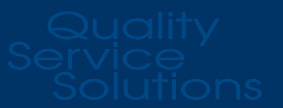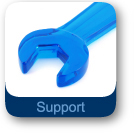Q. What kind of proof do I
need? Laser proof, Color proof, Page proof, or a PDF?
A. It all depends on what we
are doing for you and what you want the results to be. Generally, we
will only provide a Laser proof or PDF if we are typesetting or
designing the job. This is your first "draft." These two proofs could
also be used when multiple revisions are needed. We will provide a Page
proof where color is not "critical" and a Color proof when color is
"critical."
Page proofs will be provided, but not limited to: When your job has
only PMS colors, PMS color and Black only, or if an alteration is made
on your job and you request to see another proof and the color was fine
on the previous proof.
HiRes Epson proofs will be provided, but not limited to: If your job
is 4 color process, or your job is digital.
Digital Press proofs will only be provided if requested by you or your
Sales Representative. This proof usually adds 1 business day to the
production of your job.
Q. When I am writing
specifications for a booklet, is the cover included in the page count
or is it separate?
A. We quote booklets and
magazines as a book plus cover or a book, self-cover. Generally
speaking a booklet (or magazine) plus cover means the cover is a
different paper stock and not included in the page count for the text
of the publication. A booklet, self-cover, generally means the cover
for the publication is the same paper stock as the text and is included
in the page count.
Q. When we are designing a
piece for CASS Certified Mailing at Spectrum, will it need one or two
tabs?
A. Booklets and magazines do
not require tabs. Brochures will need one tab if the opening is at the
top of the folded piece when looking at address (right side up) and two
if the opening is at the bottom. There are numerous regulations as to
when tabs are required (and how many) and it is best to check with your
sales rep or the Post Office before you sign off on the design.
Q. What is and when do I need
to specify a double "bump" for a job?
A. When ink coverage is very
heavy over a large area, especially when it is a single PMS color.
Hitting the area twice with ink insures a nice consistent coverage.
Remember, too, that heavy ink coverage may require extra drying time
before it can be processed in the bindery.
Q. What does it mean when I
find out paper is a "mill item?"
A. Spectrum Printers works with
several paper suppliers and those papers we do not maintain as our
floor stock are usually available within a day or two. Mill items are,
for the most part, infrequently used paper stock that must be obtained
from a paper mill or manufactured and can take anywhere from 2 or 3
days up to three weeks to be delivered.
Q. Why or when do I need to
score my printed piece?
A. You will generally want to
score a job that folds and is printed on a cover stock. It gives a nice
clean fold. You may also want to score a piece that has heavy ink
coverage or is printed such that the fold is across the grain. These
jobs tend to "crack" at the fold and scoring reduces the tendency to
crack.
Q. What is the advantage of
using varnish on a job?
A. Varnish can be used to
enhance the appearance of a printed piece or make it more durable.
Using gloss varnish to make certain photos or graphics "pop" can
enhance the appearance of most printed pieces. Using a combination of
gloss and dull varnish further enhances the effect. Varnish can be used
for other special effects such as leaving a clear but visible pattern
on top of solid ink coverage areas. Varnish can also increase
durability of your printed piece or protect heavy ink coverage from
smearing during handling or shipping.
Q. How can Acrobat help me
prepare my files for printing?
A. The latest version of Adobe
Acrobat (9) is great for outputting PDF (Portable Document Format)
files. PDF files are created from a Postscript file or in most cases
through the design application. The great thing about PDF files is that
they output exactly how you provide them.
You probably have seen files that have "reflowed" when output.
This doesn't happen with PDF files. PDF files also allow access to all
elements of the final artwork making last minute corrections easy.
Q. On occasion, my job is late
and it always sounds like the printer is making excuses. What gives?
A. Reputable printers will
deliver your jobs on time about 95% of the time. While printing is a
science, there are many variables and sometimes the wrong combination
of variables can cause delays. For example, ink that dries quickly
during the winter can sometimes dry a little slower in the summer when
the humidity is high. If the job is to fold, stitch or otherwise be
handled, it might need an extra day to dry to avoid marking or
offsetting (damp ink can leave marks on adjacent printed pieces). We
have encountered situations where coating on certain papers has been
found to be defective and have to wait for a second delivery. No
printer wants to delay a job, but sometimes to deliver a quality job a
delay may be necessary. At Spectrum we strive to involve the customer
immediately to ask for their input and what solutions present the
fewest complications. We know that there are occasions when jobs are
truly "hot" and have critical deadlines but we recommend that you plan,
when possible, your printing projects to avoid "hot" jobs.


 |
FAQs |